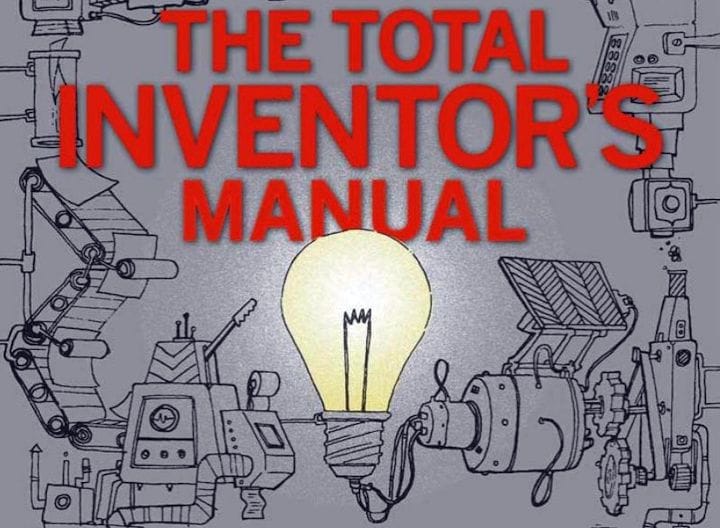![The Total Inventor's Manual [Source: Amazon]](https://fabbaloo.com/wp-content/uploads/2020/05/image-asset_img_5eb091369c8b3.jpg) The Total Inventor’s Manual [Source: Amazon]
The Total Inventor’s Manual [Source: Amazon]
This week’s selection is the “Total Inventor’s Manual: Transform Your Idea into a Top-Selling Product” by Sean Michael Ragan.
Let’s face it: readers of this publication, and that means you, are typically inventors. We like to imagine, create and show our ideas and inventions to others. This is often how major innovation occurs, should an idea become a popular product.
But exactly how does this process work? How can an idea become an invention in the eyes of the world? This book by Sean Michael Ragan attempts to describe that process. He explains:
”Contrary to popular wisdom, you don’t have to be an ace electrician, a coding prodigy, or a mechanical master to come up with a game-changing invention! You just need curiosity, a strong desire to fix a problem that you see in the world, and the determination to see your ideas become reality—and this book, which will teach you everything you need to go from zero to inventor.”
Building a Product with 3D Printing
What does this entail? It requires a great many steps, some of which are incredibly difficult. New inventors frequently don’t realize the troubles ahead, but this book takes you through each of the likely stages of product development.
It begins, as all projects should, with a discussion of ideas. Where do they come from? How can you be inspired? What are the conditions required to generate good ideas? Ragan answers these questions and proposes multiple approaches to not only come up with a good idea, but also to verify that it truly is a good idea.
Then Ragan explores the process of prototyping, something quite familiar to some Fabbaloo readers. It’s not just making something over and over; there are specific questions to ask after each iteration is completed. How do you go about testing prototypes properly to learn what really needs to be known? You also have to know when to stop iterating prototypes.
Funding 3D Printed Products
Once a product is finalized, then funding is required to take the next step, launching the product. Ragan lists a number of approaches, including Kickstarter, friendly angel funding and more. He also explores some of the initial corporation establishment steps that must be done correctly or else you will suffer later. There’s particular emphasis on protecting your intellectual property from “the Sharks”.
Manufacturing is the next stage, and Ragan shows how products should be designed to be manufactured efficiently. There is an entire section on how to work with professional manufacturers, who will be the ones actually building your invention. Supply chain management, an area that’s caused more than one 3D printer company to fail, is explained in some detail.
Finally, the last sections of the book explore how to manage the manufactured product as a business; marketing, selling, distribution and other day-to-day operations are described in detail. The very last chapter of this interesting book asks the question about exit strategy: how will you leave the idea? Sell to another company? Or keep selling yourself.
For those unfamiliar with the process of making products, this book is an incredibly good overview of the entire process. It’s also a highly placed book on Amazon’s business rankings, so it’s not just me who likes this book.
Via Amazon

